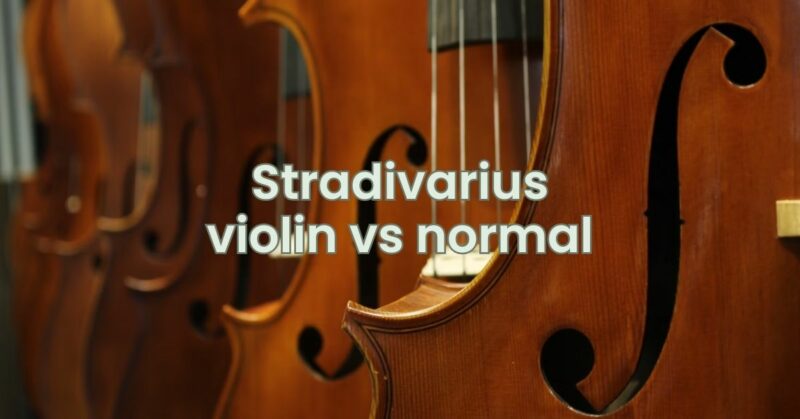The comparison between Stradivarius violins and modern violins has long been a subject of fascination and debate among musicians, collectors, and enthusiasts. Antonio Stradivari, the renowned Italian luthier from the 17th and 18th centuries, crafted some of the world’s most coveted violins. These instruments, known as Stradivarius violins, are celebrated for their exceptional craftsmanship, unique sound, and historical significance. In contrast, modern violins are crafted using contemporary techniques and materials, reflecting the advancements in violin making over the years. In this article, we will delve into the differences and similarities between Stradivarius violins and modern violins, exploring the sound, playability, and the enduring allure of these extraordinary instruments.
The Sound: Stradivarius vs. Modern Violins
The sound of Stradivarius violins is often described as rich, warm, and resonant, with remarkable projection and tonal complexity. Musicians and experts alike have praised the unparalleled sound quality of Stradivarius violins, attributing it to the combination of top-quality wood selection, craftsmanship, and varnish application.
On the other hand, modern violins vary widely in sound quality due to the diversity of materials, craftsmanship, and techniques used. While some modern violins can rival the sound of Stradivarius violins, others may not possess the same depth and complexity. Nonetheless, contemporary violin makers continue to refine their craft, often taking inspiration from Stradivari’s designs and experimenting with new materials and techniques to produce exceptional sounding instruments.
The Playability: Stradivarius vs. Modern Violins
Stradivarius violins are renowned for their playability, with an ideal balance between responsiveness and ease of playing. Many virtuoso musicians have expressed their preference for the playability of Stradivarius violins, noting the effortless response to bowing and the smooth fingering experience.
Modern violins can also offer excellent playability, and many professional musicians prefer modern instruments for their responsive and versatile nature. Advancements in violin making techniques and ergonomics have allowed contemporary violin makers to create instruments that meet the demands of today’s performers.
The Mystery and Market Value
The allure of Stradivarius violins lies not only in their exceptional sound but also in their historical significance and rarity. The limited number of surviving Stradivarius violins has contributed to their mystique and exorbitant market value. Some Stradivarius violins have fetched millions of dollars at auctions, making them some of the most expensive musical instruments in the world.
In contrast, modern violins are more accessible in terms of price and availability. Contemporary violin makers offer a wide range of instruments at various price points, catering to musicians of all levels and budgets.
Conclusion
The comparison between Stradivarius violins and modern violins is a multifaceted exploration of sound, playability, and market value. Stradivarius violins, with their legendary sound and historical significance, continue to be revered as some of the finest instruments ever crafted. However, modern violins have made significant strides in recent decades, offering exceptional sound and playability that rival their antique counterparts.
Ultimately, the choice between a Stradivarius violin and a modern violin depends on individual preferences, budget, and the specific needs of the musician. While owning a Stradivarius violin is a dream for many, modern violins crafted by skilled luthiers continue to impress and enchant musicians worldwide. The enduring legacy of Stradivarius violins and the continuous innovation of modern violin making contribute to the richness and diversity of the world of violin music.


